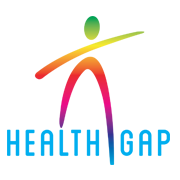When the omicron variant once more caused COVID-19 cases to soar to record highs, several local organizations, including Interact for Health, worked together quickly so that residents of African American communities had access to testing.
“We had a variant that was highly contagious hitting at the holidays when people were already together and we needed to respond to ensure that people could get tested to find out their status,” said Renee Mahaffey Harris, President and CEO of Closing the Health Gap.
Mahaffey Harris said she received a flurry of calls just after Christmas asking where testing was available.
“People were caught flat-footed,” she said. “The world wasn’t prepared for omicron.”
Longtime partners spring into action
Mahaffey Harris quickly contacted then-Cincinnati Health Commissioner Melba Moore. The two had worked together in the early days of the pandemic to plan COVID-19 testing sites. Mahaffey Harris said they set out to “roll up our sleeves and do it again.”
To deal with the new crisis, the health department would get the tests and provide clinicians to staff the sites while Closing the Health Gap would enlist organizations to be hosts. For that Mahaffey Harris turned to locations that had previously been highly effective testing sites – places near where residents live, that have good reach to Black businesses and are easy to get to, she said.
One of those sites was New Prospect Baptist Church in Roselawn. The Rev. Damon Lynch III, pastor of New Prospect, said one of his parishioners had been traveling to Mason to volunteer at a testing site.
“He lives in Roselawn and would have preferred to work in his own community with the ability to walk to work and not have to carpool to Mason,” Lynch said.
Neighborhood sites like New Prospect also offer the convenience of getting a test before or after work and trust in a location that residents are already familiar with, Mahaffey Harris said.
“People are more apt to go to an organization that is already serving their needs and is a trusted partner for them,” she said.
More resources needed
By New Year’s, four previous sites – New Prospect, Corinthian Baptist Church in Paddock Hills, Truth & Destiny Church in Mount Airy and the Urban League of Greater Southwestern Ohio in Avondale – plus a new site at the African American Chamber of Commerce in Walnut Hills were on board. Tests were procured, and Cincinnati Mayor Aftab Pureval announced the new test sites the first week in January.
But hosting a test site requires more than a location, the tests and the people to administer them. Sites also need stipends and meals for volunteers directing traffic, personal protective equipment, signage and extensive cleaning. Harris said resources to pay for these had been available earlier in the pandemic, but not by the time omicron emerged.
That’s where Interact for Health could help.
When the gap in resources was identified, Lynch contacted Ross Meyer, Interact for Health’s Vice President of Strategy. About the same time, Interact for Health’s new President and CEO Kate Schroder contacted Moore to find out how the nonprofit private foundation could help.
“Everyone deserves access to testing and health services in convenient and trusted locations,” Schroder said. “Especially during surges – when demand rises quickly and supply is limited – people with resources often crowd out access for others.
“We were pleased to work with our community partners to quicky help set up additional neighborhood sites so testing was available for those who needed it at the height of the omicron surge.”
With everything in place, testing at the five sites began in mid-January. Between Jan. 18 and Feb. 25, the five sites administered more than 1,900 tests, Moore said. Early response was high, Lynch said, with New Prospect averaging 200 tests per day.
Looking ahead
As the omicron variant declined in February so did the number of tests conducted at the sites. But some locations will continue as “two-for-one sites,” where residents can receive COVID-19 testing or vaccination. Moore said having the vaccine readily available may entice people who must get tested frequently – either for work or other activities – to finally get vaccinated. New Prospect site coordinator Diana C. Bailey said the vaccine will be offered there starting in mid-March.
It’s part of an effort to increase the vaccination rate, Moore said. As of March 11, only 59% of Greater Cincinnati’s total population was vaccinated, according to the Health Collaborative. Plus, only 46% of the African American population in Hamilton County has received at least one dose of COVID-19 vaccine,according to the Ohio Department of Health. That compares with 63% of the white population.
Mahaffey Harris, Moore and Schroder all stressed that community partnerships are key to conducting initiatives such as the testing program.
“It’s very important to work collaboratively across the system,” Moore said. “Whether it’s funders, whether it’s health systems, community-based organizations, faith-based organizations – you can’t get it done unless there is working across the system and collaboration. Each person has a piece that they bring to the table that they can implement.”
The collaboration shown during the COVID-19 pandemic could lead to progress on other issues facing our community, Mahaffey Harris said.
“We put aside all our individual needs and said ‘what are we going to do to hunker down and help our community?’ And if we can do that on many other issues, think what we could solve.”

